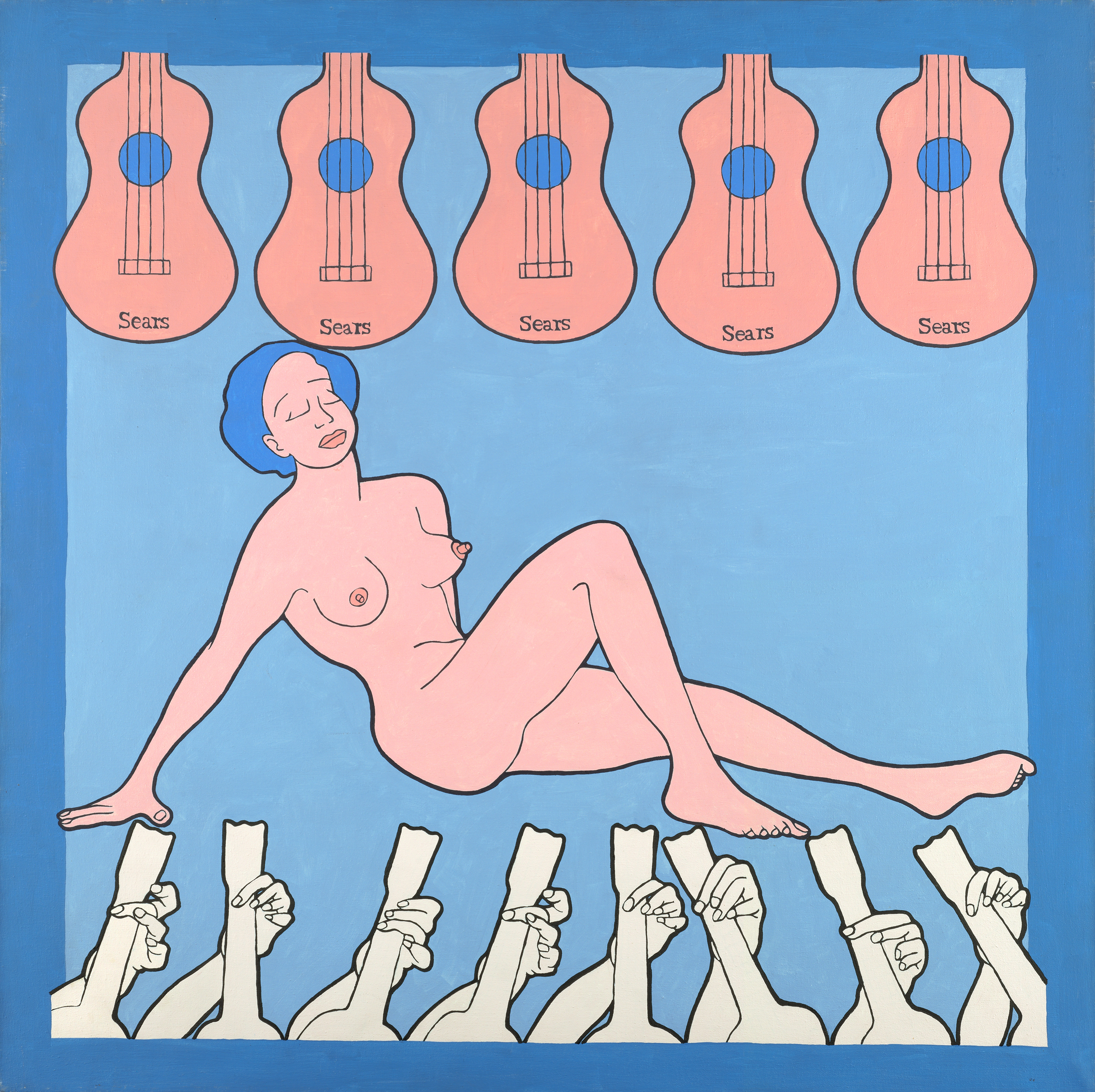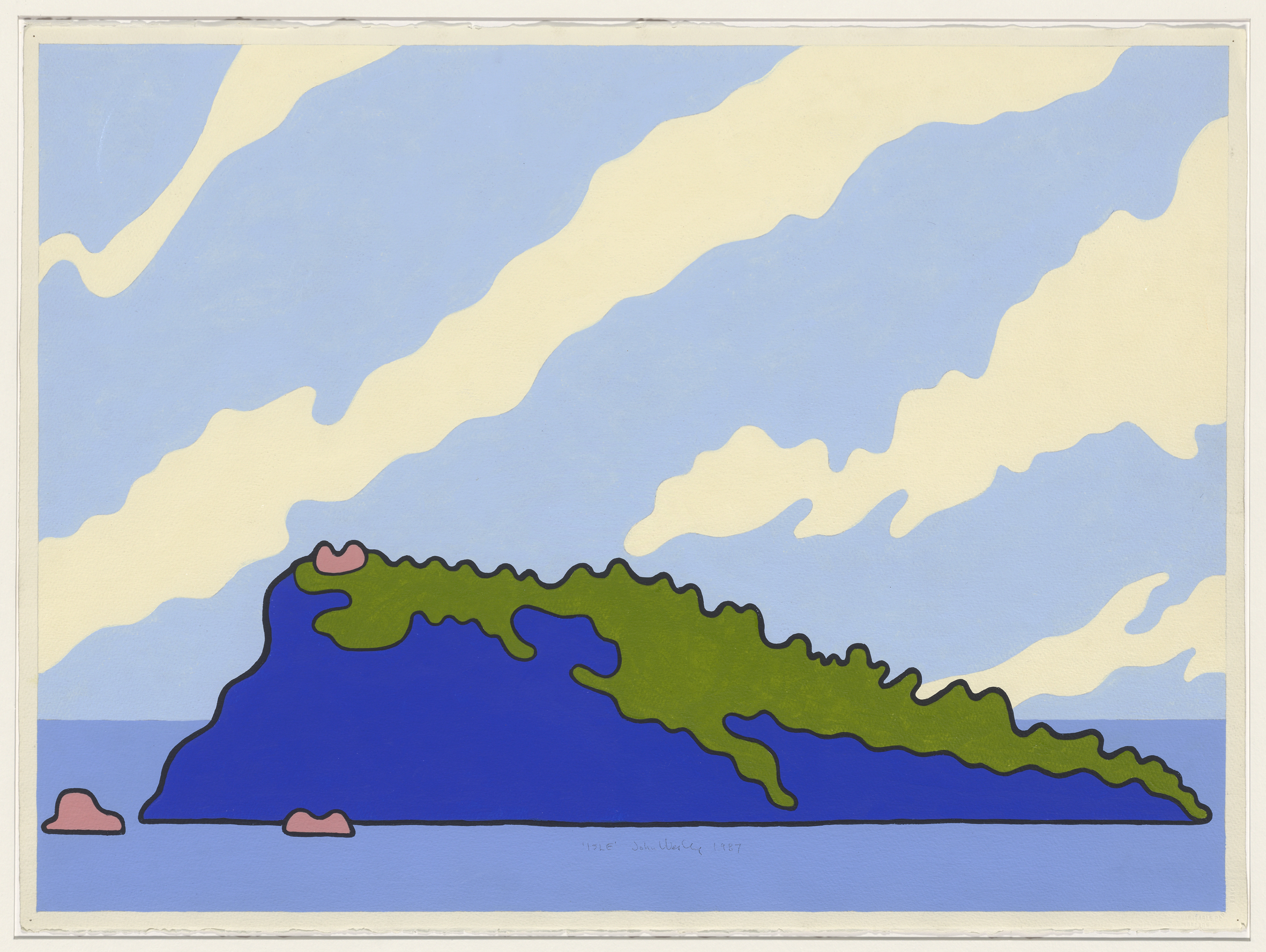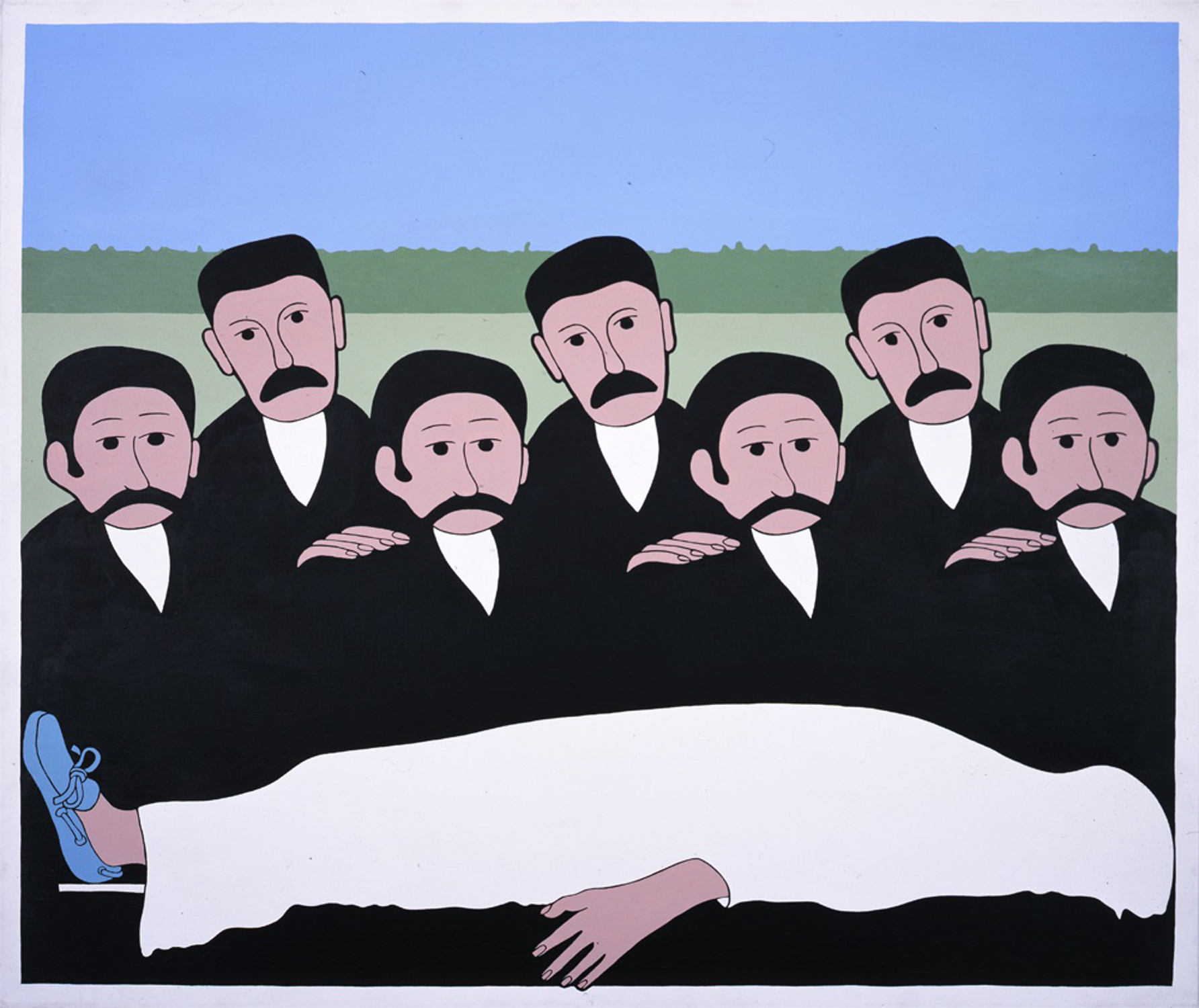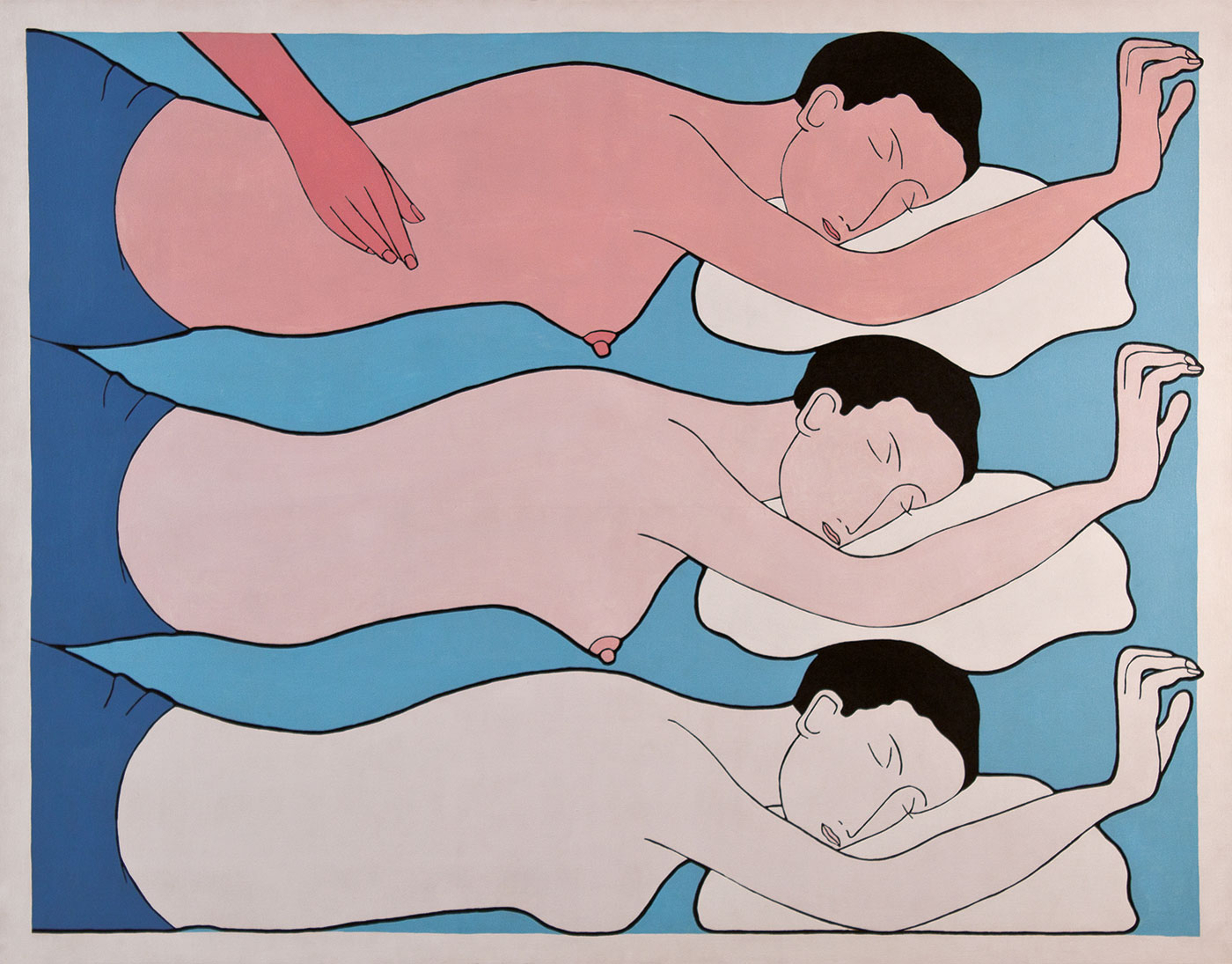First exhibiting alone in New York in 1963, John Wesley’s practice has continued through numerous generations of painters — finding itself aligned variously with Pop, Surrealism and Eroticism. London’s Waddington Custot open The Henry Ford Syndrome this month, a solo show curated by Roxana Afshar.
Can you explain the title for the show, The Henry Ford Syndrome?
‘The Henry Ford Syndrome’ refers to the rhythmic pattern of repetition throughout Wesley’s paintings, which he also uses to create surreal scenarios. To him, it is simply funny and helps to put things into perspective. Wesley said: ‘If you say foot foot foot foot foot foot foot foot foot long enough then foot becomes hilarious…If you paint 40 Nixons it puts Nixon in his place.’
In the late 1950s and 1960s artists started to think more about how standardized production, whether of images or goods, affected modern society. While Wesley has always been cautious not to explain his work (or his inspirations) too much, I think the ideas of the time informed his approach in this regard and led him to coin the phrase The Henry Ford Syndrome. As the phrase explains his work so well, and as the focus of our show is the repetition seen throughout his career, we thought it would make a great title.
How did you decide which particular strands of the artist’s work you wanted to emphasise?
The works in the exhibition range from 1964 to 2011 and repetition is a constant factor throughout, so we felt it was an important aspect to highlight. As many works in the show have not been shown in London before we also wanted to take the opportunity to examine Wesley’s incredibly distinctive graphic language and emblematic imagery from over the past 50 years.
How do you feel Wesley’s practice has developed over the years — from the time of the first work in this particular show?
In many ways there are elements to Wesley’s works that haven’t changed over the past five decades. The minimal palette of colours, his appropriation of Rococo idiom, the flatness of the works, the clean black lines that surround his figures and even the subject matter remain consistent. However, his work has changed in nuanced ways. The colours in his later works vary slightly from the sharper, colder blue and paler pink of the 1960s and his paintings of female nudes since the 1990s feature close ups of faces and body parts as opposed to the full figure.
Wesley’s work is often categorised as Pop, although there are notable influences from many other movements. Where does it sit for you?
Over the years Wesley’s paintings have accrued a number of different labels such as Pop, Surrealism, Minimalism and ornamental Rococo, but his work is actually much more aligned to contemporary artistic production today in refusing this kind of categorisation.
What is it about Welsey’s work that feels particularly timely for right now?
So many people are interested in Wesley’s work at the moment. I think a lot of it has to do with him favouring timelessness over participation in mass/popular culture. He uses technical aspects of Pop Art – flat images, strong lines, rhythmic repetition – but the subject is often surreal. Wesley has created an amalgamation of a number of art movements, reinventing a very distinguishable imagery which makes him a unique character in post-war art history.
‘The Henry Ford Syndrome’ is showing at Waddington Custot from 16 September until 22 October











